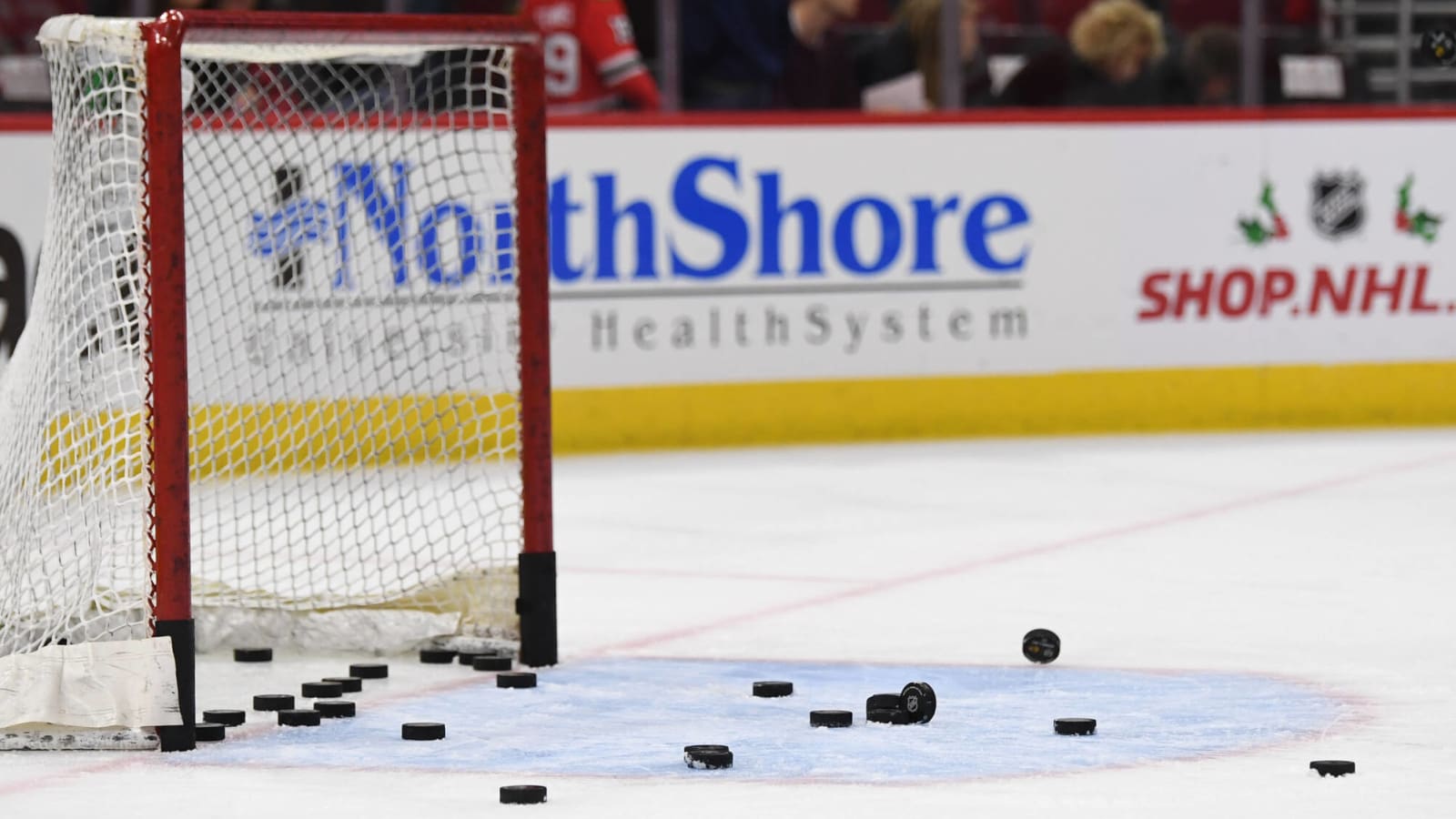
Why do some teams have a goalie pipeline and others don’t? For me, it’s pretty simple: the teams that are successful in developing talent in net have committed the resources and personnel to make it happen.
It’s not just a matter of hiring a goalie coach and hoping for the best. Teams need scouts, coaches and management to buy into the concept of developing from within. But what exactly does that entail?
It used to mean listening to the goalie coach, or having someone in management with a background in the position. But what it’s turning into — and what it should be — is valuing the opinion of an entire goaltending department.
One of the first goalie factories that I can think of was the Montreal Canadiens, under the tutelage of goaltending guru Francois Allaire. Patrick Roy was the first. But he wasn’t alone. Jocelyn Thibault and Jose Theodore followed closely behind. Tomas Vokoun came through. And even after Allaire departed, the Habs were able to develop Mathieu Garon and Jaroslav Halak. Then Carey Price.
It’s impossible to say that the Montreal Canadiens didn’t care about goaltending. As a franchise, Montreal saw the light before many others. Allaire and Roy were unique in that they had a working relationship that was both functional and innovative. And other teams started to pay attention.
Allaire laid the groundwork. And within the next decade, other teams began to follow suit.
Look at how the Nashville Predators were able to develop talent. It started with the hiring of Mitch Korn, who had previously done so with the Buffalo Sabres. Vokoun’s game took off in Nashville. And under Korn’s leadership, the Predators developed names like Chris Mason, Dan Ellis, Carter Hutton and Pekka Rinne.
More recently, the Washington Capitals, Los Angeles Kings and Columbus Blue Jackets have all been hot spots for goaltender development. The teams have drafted well. But they’ve also hired the right people to make it happen.
Washington’s success has impressed me for a long time. The Capitals have been willing to let goalies develop at their own pace and in the appropriate league. Washington has never been afraid of starting a prospect’s career in the ECHL and letting him earn their way to the top.
Semyon Varlamov. Michael Neuvirth. Braden Holtby. Philipp Grubauer. Vitek Vanecek. Ilya Samsonov. All developed by the Capitals organization, a trend that started under then-goalie coach Dave Prior.
The Kings were another team that got onboard the goalie train early and was able to reap the benefits. Former NHL goaltender Bill Ranford was instrumental in developing a proper goalie department, and he was aided at the minor-league level by Kim Dillabaugh, who’s now with the Philadelphia Flyers.
Jonathan Bernier. Jonathan Quick. Martin Jones. Jeff Zatkoff. Cal Petersen. All homegrown by Los Angeles. And Ranford was able to bring Jack Campbell and Peter Budaj back to the NHL.
As for Columbus, I think the defining moment was when the team hired Ian Clark as its goalie coach years ago. He’s since moved on to the Vancouver Canucks, but Clark built the foundation in Columbus, one that’s carried on by former NHL goaltender Manny Legace, who currently heads up the Blue Jackets goalie department.
Sergei Bobrovsky was his star pupil, but Clark was also able to retool Curtis McElhinney’s game. Joonas Korpisalo, Anton Forsberg and Elvis Merzlikins all developed in-house. And Matiss Kivlenieks was next in line before his life was tragically cut short in the summer of 2021.
Since I spent most of my career in the AHL, I got to see the development firsthand. It seemed like every year there was a new prospect coming through each of the organizations I just listed.
I was lucky to be able to work with all the goalie coaches I mentioned. I learned something from every one of them — even in retirement. Dave Prior and I never crossed paths until we were both employees of the Vegas Golden Knights and, despite being a broadcaster at the time, I’d occasionally get the call to practice. Picking his brain was always a highlight of those days.
I think at this point, most teams realize that developing goaltending should be a priority. It’s a cost-effective way to better your team, especially when compared to shopping the market for a free-agent goaltender.
But to me, it’s not just about filling a team’s roster. It’s about creating assets. Teams are always in need of goaltending. Having a true No. 1 netminder shouldn’t prevent any NHL organization from drafting and developing talent in the crease. Flipping a goaltending prospect isn’t unheard of when a franchise has multiple options coming down the pipeline.
My pro career began in 2005, and back then, hardly any team had a goalie coach dedicated to its minor-league affiliates. Now, entire goalie departments are cropping up. Some franchises have three coaches. Some have a dedicated scout. All are aware of how important it is to develop from within. And it all starts with the NHL Draft taking place July 7 and 8 in Montreal.
More must-reads:
- Every NHL team's likely next retired number
- Longtime Lightning forward scores twice in possible home swan song
- The '100 catches in an NFL season' quiz
Breaking News
Customize Your Newsletter
 +
+
Get the latest news and rumors, customized to your favorite sports and teams. Emailed daily. Always free!

